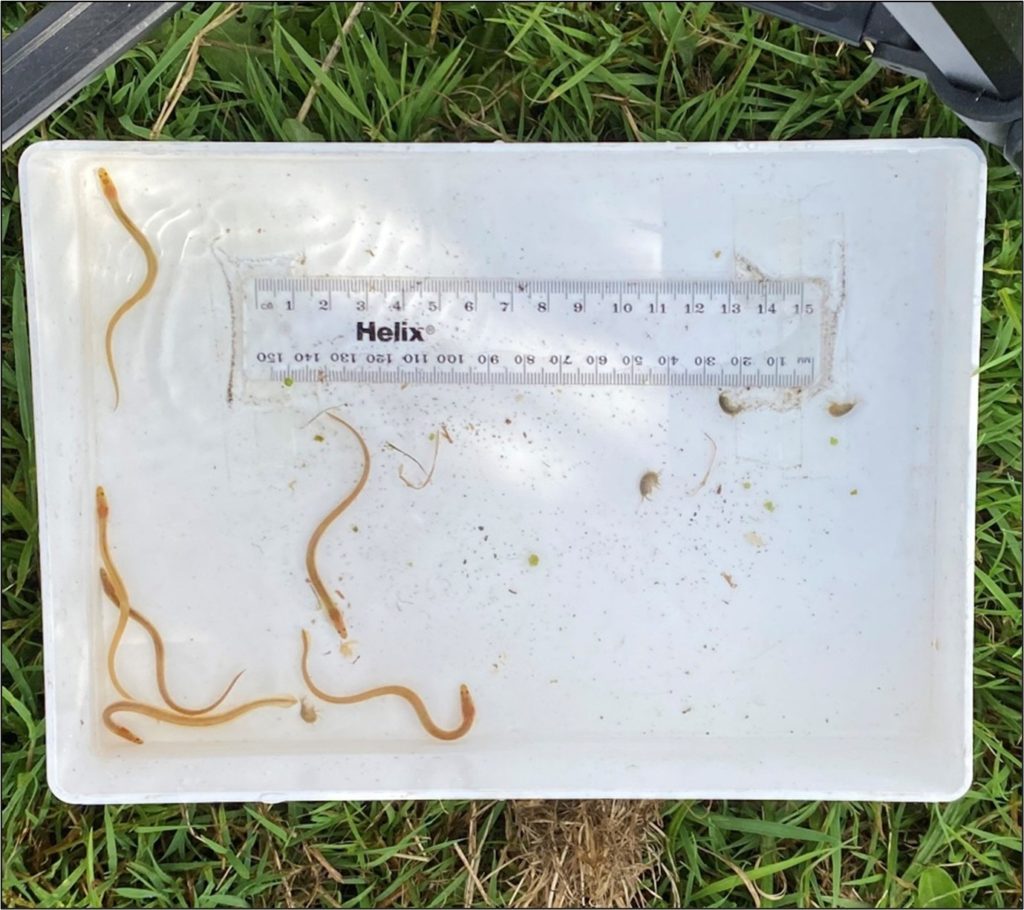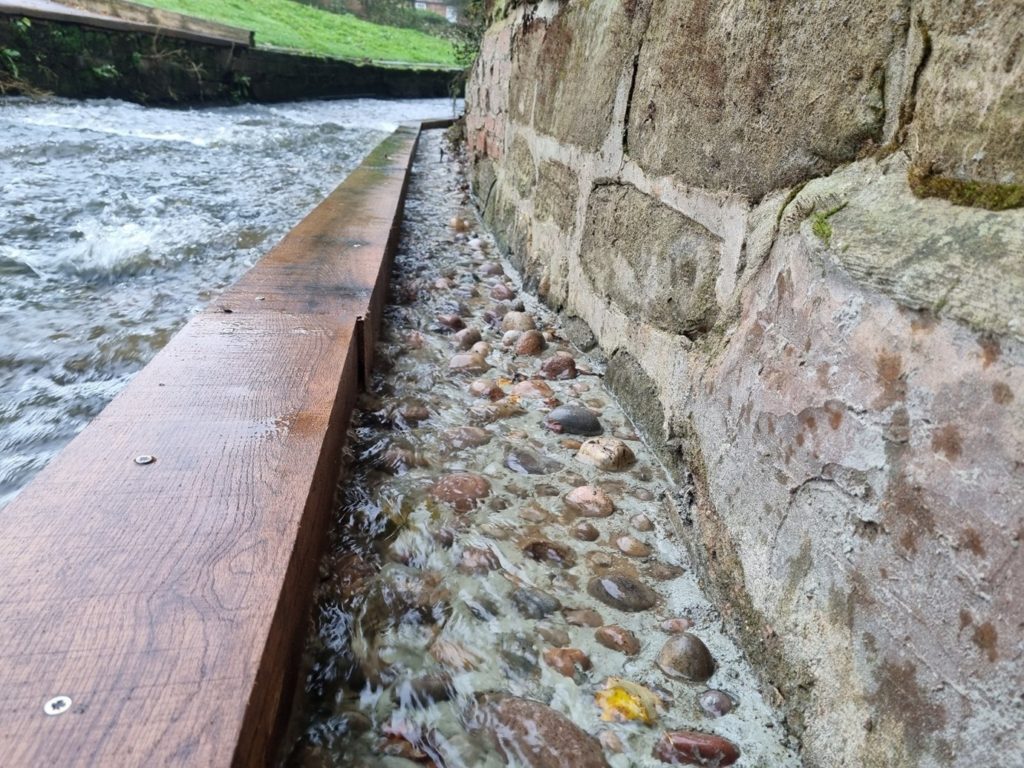A new type of eel pass that uses natural gravel substrate rather than existing plastic alternatives has proven to be highly effective in an important new joint project.
Tests – carried out as part of a collaboration among RSK Group company Fishtek Consulting, the University of Exeter's Department of Earth and Environmental Sciences, the Environment Agency and Bournemouth Water – compared eel passage rates across existing plastic-based eel passes with a new design using natural gravel.
European eels are listed as critically endangered on the IUCN Red List of Threatened Species, with their population having decreased by 90-95% since the 1980s.
University of Exeter final-year environmental science student Ellie Strudwick undertook the work for her dissertation project after spending a placement year working at Fishtek.
She said: "The European eel is a catadromous species - they grow and develop in freshwater for up to 20 years before they migrate across the Atlantic to the Sargasso Sea to breed.
"Juvenile eels (elvers) are small and vulnerable when they begin their upstream migration into freshwater, as they are immediately faced with river obstructions, such as weirs, dams and hydropower stations.
"These artificial barriers prevent elvers from migrating upstream to resource-rich habitat and have been a major cause of European eel population decline."
Fishtek Technical Director Adam Fryer explained that barrier removal is vital in eel conservation. Where a barrier cannot be removed, eel passes are often installed to allow elvers to ascend upstream.
He said: "There is a range of off-the-shelf substrates, usually formed from plastic, that can be installed on an existing barrier or in a trough or channel that bypass a barrier and provide the right conditions to allow eels to ascend upstream.
"However, these substrates are not always effective, and they risk leaching microplastics into the watercourse."
Fishtek built a test facility and installed it at Knapp Mill, a site on the Hampshire Avon owned by Bournemouth Water.
Strudwick said: "The test facility comprised a series of channels lined with different eel substrates that led to a trap box divided into three sections.
"I controlled the flow rate via an electric pump to ensure an even flow in each section and checked the trap box daily.
"The trapped elvers were counted and photographed so they could be measured on the computer using software. I then released the elvers upstream.

"Overall, we found that gravel substrate was as effective as the widely used bristle substrate, while readily used peg type tile substrate proved to be relatively ineffective for elver passage.
"I concluded that eel tile spacing was too high and that elvers were likely able to ascend only because of algae growth on the tiles."
The results of the study will inform future eel pass designs.
Fryer said the study supports the use of gravel substrate in eel passes and gives an indication of the type of conditions required to optimise the passage of eels, such as water flow, depth, substrate size and density.
He said: "This study has given us a huge amount of information that can inform our eel pass design.
"In fact, we have already begun to apply this to existing sites and have installed two gravel type eel passes at a small weir on the Viar Water and the well-known Rufford weir (immediately upstream of Rufford ford) on the Rainworth Water, both in Nottinghamshire.
"It also provides a framework to show how a collaborative approach among industry, academia, a water utility and the regulator can advance the field of fish passage research and optimise outcomes when designing and installing environmental mitigation."

Environment Agency Senior Technical Specialist (National Fisheries Technical Team) Dr Adrian Fewings said: "The Environment Agency has been actively involved in developing more effective eel pass designs.
"A key element of this has been to develop and evaluate suitable eel pass substrates for use in a range of environmental projects.
"This collaborative approach allows all participants to progress improvements in eel pass design based on sound field observations.
"This has been a very positive collaboration, enabling effective cross-sector working, that is paving the way for rapid adoption of new techniques at appropriate sites.






